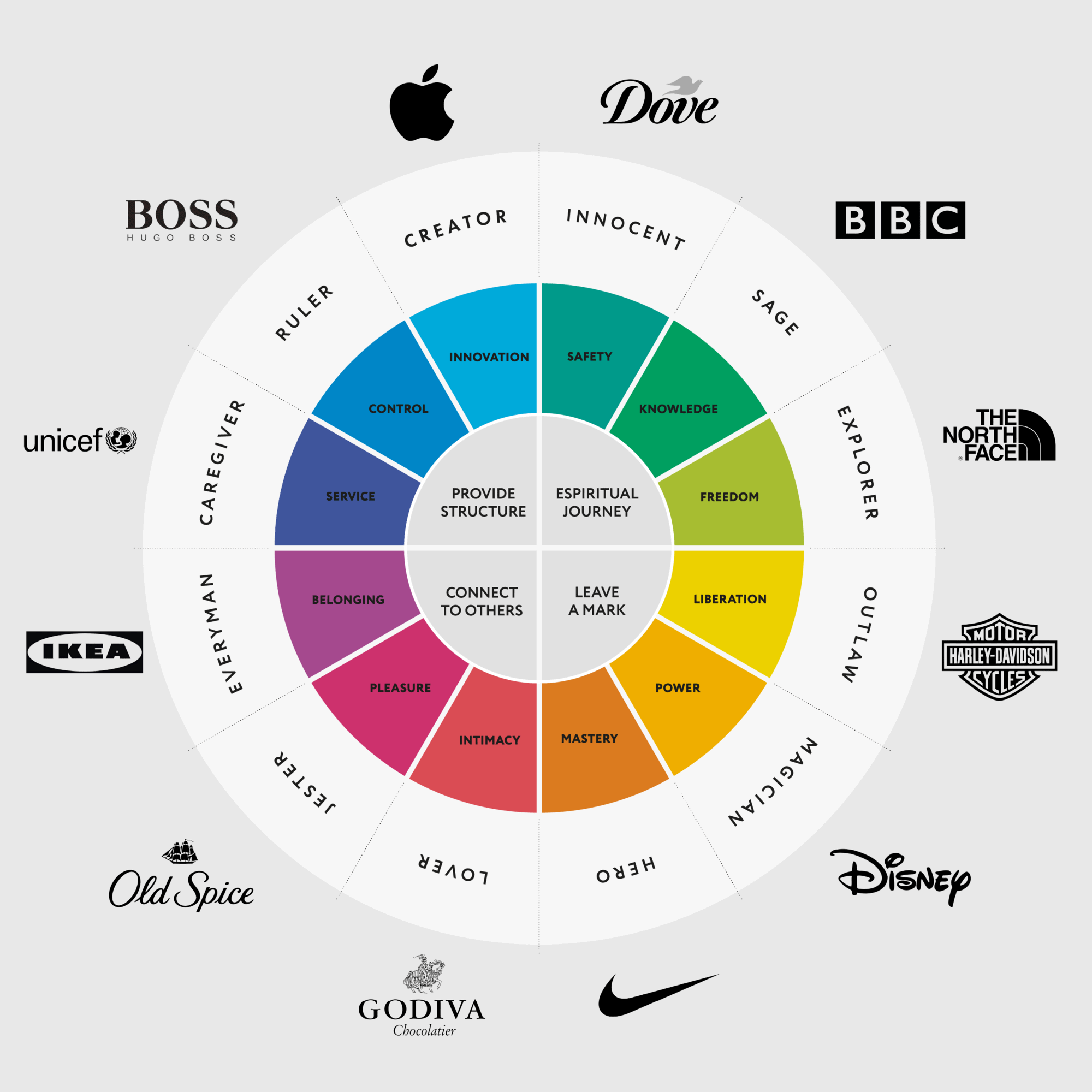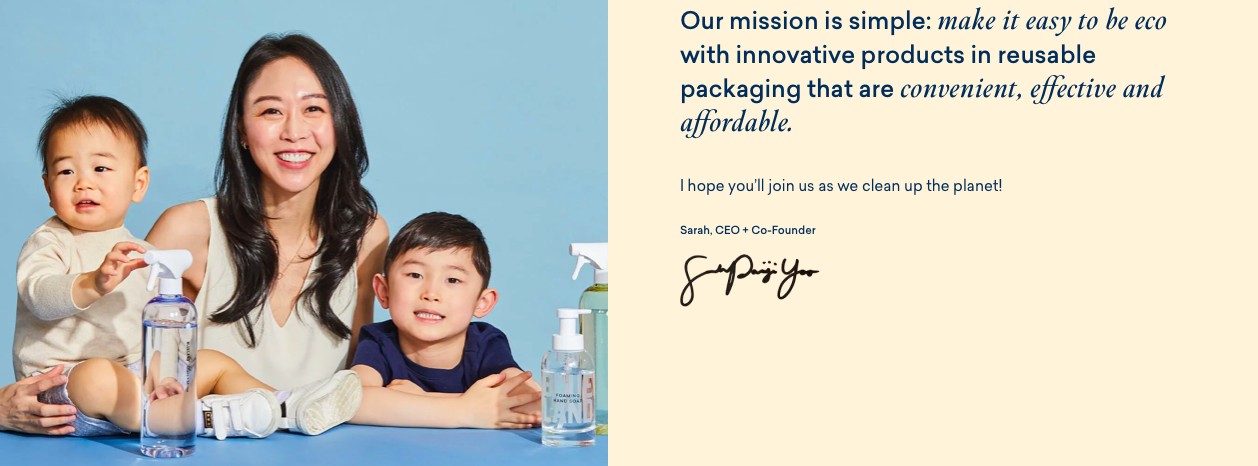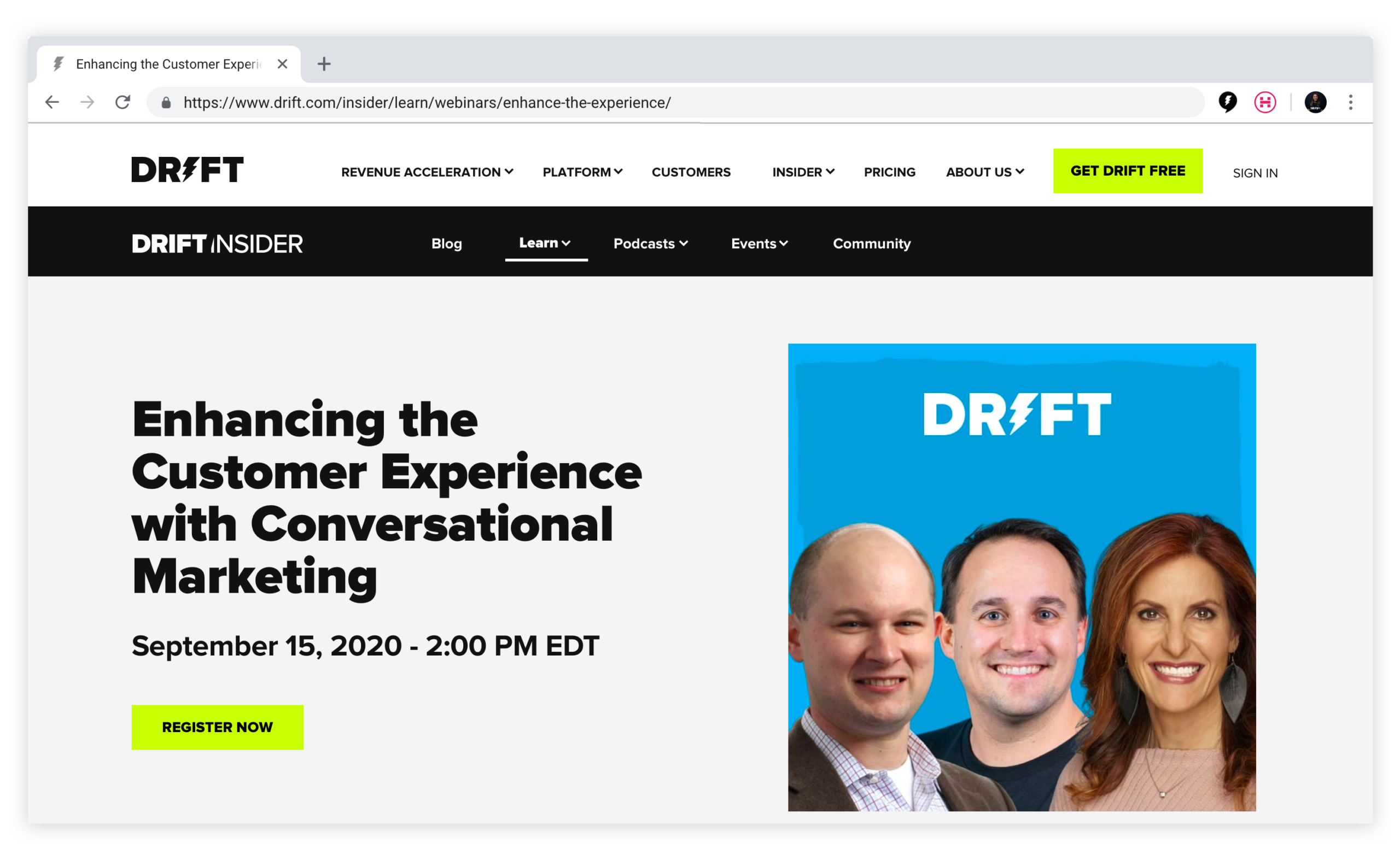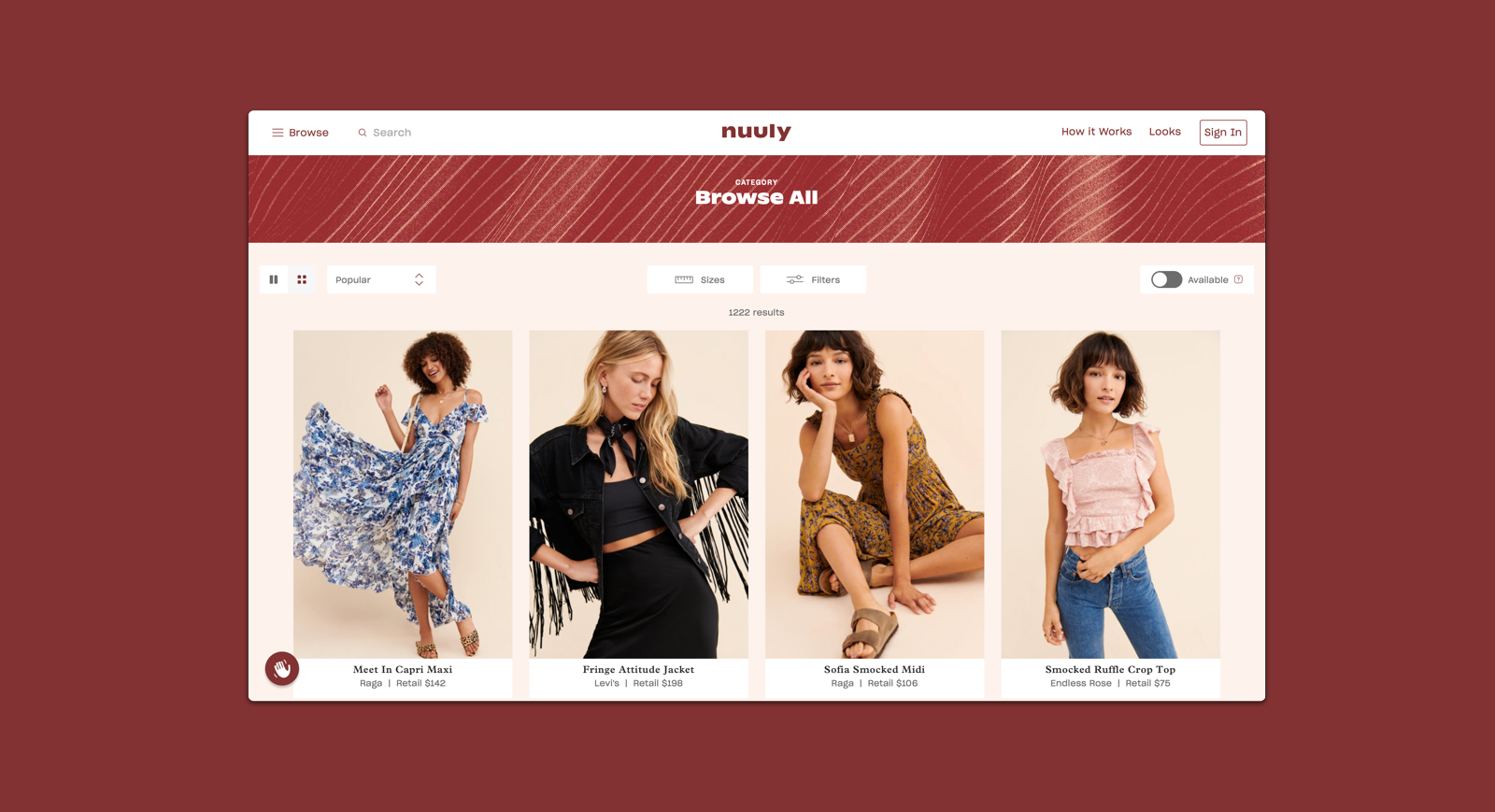|
Getting your Trinity Audio player ready...
|
Do you want to stand out from your competitors, drive brand loyalty and grow your business? Whether you are an established company or a start-up, it's essential to master the art of brand storytelling.
Storytelling enables companies to capture their audience’s attention, but it's not as simple as it sounds. It requires skill, effort, and time to reach the right people with the right kind of stories.
Good storytelling can foster strong emotional connections between brands and their customers. With complete control over who, what, and how you tell stories about your brand, you can create powerful narratives that will catch your customer's interest and make them more likely to choose your brand over another.
In this article, we will explore how to do effective brand storytelling using real-life examples.
Brand Storytelling
Brand storytelling is the process of creating a series of plot points to build an emotional connection between a brand and its target audience.
What Is Brand Storytelling?
Brand storytelling is a powerful tool for businesses to create a deeper connection with their audience. It is the process of creating a series of plot points that builds an emotional connection between a brand and its target audience.
A brand story recounts the series of events that sparked a company's inception and expresses how that narrative still drives its mission today. It helps to humanize a brand, making it more relatable and memorable to its audience. A well-crafted brand story is a summary of a company's history, mission, purpose, and values told with a narrative structure that brings it to life.
When a brand has a compelling story, its audience will remember who it is, develop empathy for it, and ultimately care about it.
For example, while content marketing can channel brand stories, not all content marketing is brand storytelling. Content marketing involves creating educational or promotional content to attract new customers, engage existing ones, and increase brand loyalty.
It is just one channel for telling a brand's story. On the other hand, brand storytelling tools and techniques are used to create branded content that speaks to the values and vision of a company and generates an emotional response.
In conclusion, brand storytelling is a powerful way for businesses to connect with their audience on a deeper level. Businesses can attract and retain loyal customers by crafting a compelling brand story that reflects the company's values and mission. Content marketing can be used to channel a brand's story, but it's not the same as brand storytelling.
The Elements of Powerful Brand Storytelling
Powerful brand storytelling can evoke emotions, drive engagement, and connect your brand with your target audience. However, it requires careful planning and execution of several key elements.
Here are some of the key elements to producing a brand story that sticks:
Empathy
Empathy is crucial in making your audience relate to your brand story. To ensure that your brand story resonates with your target audience, you need to put yourself in their shoes and create a story that speaks to their needs and desires.
Attention-grabbing
Your brand story should have a distinct voice and personality that is attention-grabbing and recognizable. This helps establish a consistent brand identity and makes it stand out in a crowded market.
Authentic
Authenticity is key to building trust and credibility with your audience. Your brand story should be honest about your company's unique features, values, and challenges. This helps create an emotional connection with your audience and make them feel part of your brand's journey.
Relatable
Your brand story should be relatable to your target audience. Avoid using technical jargon or industry-specific language, and instead, focus on demonstrating that you understand your customers and the challenges they face.
Consistency
Consistency is essential in ensuring that your audience knows what to expect from your brand. Your brand story should be integrated into all areas of your business, including marketing, sales, and internal and external communications.
Aligned with business goals
Your brand story should be aligned with your business goals and have a clear call-to-action that provokes action. By doing so, you can drive engagement and turn your audience into loyal customers.
Provoke action
The key elements of powerful brand storytelling are empathy, attention-grabbing, authenticity, relatability, consistency, alignment with business goals, and a clear call-to-action.
By incorporating these elements into your brand storytelling strategy, you can create a compelling story that resonates with your audience and drives your business forward.
Why Does Brand Storytelling Matter?
Brand storytelling is an essential tool for businesses looking to establish an emotional connection with their audience. By creating a compelling brand story that encapsulates your company's values, mission, and purpose, you can build an emotional connection with potential customers who share your values.
In today's crowded marketplace, it's not enough to simply provide a product or service. Customers want to feel like they are part of something bigger than themselves. By crafting a powerful brand story, you can make your audience feel like they are part of a community that shares their values and beliefs. This can lead to increased customer loyalty, advocacy, and ultimately, sales.
Additionally, brand storytelling can help differentiate your company from the competition. In a world where there are often many businesses offering similar products or services, a compelling brand story can help set you apart. By highlighting what makes your company unique and explaining why it matters, you can capture the attention of potential customers who are looking for something different.
Brand storytelling can also help to humanize your brand. By sharing the story behind your company, you can help customers relate to your business on a more personal level. This can create a sense of trust and authenticity, which is essential for building long-term relationships with customers.
In summary, brand storytelling matters because it helps you to establish an emotional connection with your audience, differentiate your company from the competition, and humanize your brand. By crafting a powerful brand story that is aligned with your business goals, you can attract and retain loyal customers who share your values and beliefs.
How to Tell Your Brand Story
Telling your brand story is an essential component of your marketing strategy. It helps to create a narrative around your brand that resonates with your target audience and helps build a loyal customer base. Here are the steps to follow to tell your brand story through content.
Step 1: Establish your origin story
Your company's origin story is the foundation of your brand storytelling. It's where you come from and the events that brought you to the present day. Establishing your origin story is an essential part of creating a compelling brand story that resonates with your audience.
To create your origin story, start by including your personal goals and values. Understanding how your personal experiences may influence your company's goals and mission is crucial.
For example, Fire Department Coffee is a company founded by U.S. Navy veteran and former firefighter Luke Schneider. Schneider has made his firefighter and veteran background part of FDC's origin story. He was looking for a strong brew to get him through grueling shifts when the idea of launching FDC was born. The company sticks close to its roots, often supporting veterans' and first responders' initiatives in the process.
Your journey to the present day can help pinpoint specific personal experiences to use in your brand storytelling. It can also help create an emotional connection with your audience. To craft your origin story, think about why your company was created, who founded it, and how it was founded.
Consider your company's vision, as well as any successes or challenges you have faced. It's important to highlight how you overcame these challenges and how they shaped your company's values and mission.
Establishing your origin story is just the first step in creating a powerful brand story. By sharing your company's history, mission, and values with your audience, you can build an emotional connection and develop empathy. Your origin story will set the stage for the rest of your brand storytelling, so take the time to craft a compelling and authentic narrative.
In the origin story of your company, think about these things:
- Why was it created?
- Who founded it?
- How was it founded?
- What is the company's vision?
- What successes have you had?
- What challenges have you faced?
- How did you overcome them?
Step 2: Build your hero's journey
Building a hero's journey is a powerful way to create a compelling brand story. The Hero's Journey is a classic storytelling template that has been used for centuries in literature and movies, and it can also be applied to your brand story.
The template follows a specific emotional arc that resonates strongly with consumers in marketing materials. At its core, the Hero's Journey is about transformation, taking the reader on a journey from a state of discontent to a state of fulfillment.
In the context of brand storytelling, the hero represents your brand's potential customer. The journey they take is defined by their behaviors, needs, and desires, as well as the challenges they face. It's essential to understand your target audience and what motivates them to make a purchase, so you can craft a hero's journey that speaks directly to their needs.
For instance, in the movie Rocky, the hero is Rocky Balboa, an underdog boxer who faces numerous obstacles and setbacks as he tries to become a champion. His journey involves facing a formidable opponent, Apollo Creed, and despite initially being seen as an unlikely contender, Rocky ultimately triumphs.
This classic story structure of the hero's journey has resonated with audiences for decades and can be applied to your brand storytelling to engage with your customers emotionally.
To create a hero's journey for your brand, consider the following steps:
- Define your hero: Who is your target customer? What are their goals, aspirations, and pain points?
- Establish the hero's current state: What is their current situation? What problems are they facing?
- Introduce the disruption: What is the catalyst for change? What disrupts the hero's current state and forces them to seek a solution?
- Present your solution: How does your brand offer a solution to the hero's problem? What makes your solution unique and compelling?
- Show the transformation: What are the results of using your product or service? How has the hero's life been transformed?
By following this template, you can create a hero's journey that resonates with your audience, demonstrates the value of your brand, and inspires action.
Step 3: Think about your brand personality
Establishing your brand personality is essential to connect with your customers on a deeper level. One way to do this is by applying human characteristics to your brand. Based on 12 archetypes developed by Carl Jung, the Brand Archetypes Framework, based on 12 archetypes developed by Carl Jung, can help you identify which personality is prevalent among your target market.
Each archetype has its own set of emotions and associations that businesses can use to align their brand archetype to the personality embodied by their customers, strengthening their brand storytelling.
GEICO, the insurance company, is an excellent example of a brand that has successfully used this framework to build a strong brand personality. They have established a brand narrative with memorable catchphrases and fun, fictional spokespeople, like the GEICO Gecko.
By aligning its brand archetype with its customers' personalities, GEICO has become one of the largest companies in the United States, helped by its effective brand storytelling.

Step 4: Define your brand purpose and values
Defining your brand purpose and values is an important step in crafting a compelling brand story. Your brand's purpose and values should align with your target audience's beliefs, and act as a guide for all your brand communications.
Brand Purpose
A brand's purpose is a concise statement that communicates the value your brand creates in the lives of your customers. It should be based on your brand story, and reflect your company's mission and vision. Your brand purpose should be communicated in a way that resonates with your target audience and provides them with a reason to engage with your brand.
Here are some examples from well-known brands:
Dove
Dove's brand purpose is "To help women everywhere develop a positive relationship with the way they look, helping them realize their full potential." This statement is aligned with the brand's messaging and products, emphasizing women's empowerment and self-confidence.
Patagonia
Patagonia's brand purpose is "To build the best product, cause no unnecessary harm, and use business to protect nature." This statement reflects the company's commitment to environmentalism and highlights its ethical and sustainable business practices.
Brand Values
It's essential to identify your brand values. These values should be rooted in your company's culture and beliefs, and reflect what your brand stands for. When defining your brand values, it's essential to choose values that align with your target audience's beliefs and can differentiate your brand from competitors.
Some examples:
Adidas
Adidas's brand values include Performance, Passion, Integrity, and Diversity. These values reflect the company's commitment to excellence, teamwork, and inclusivity.
Zara
Zara's brand values include Beauty, Clarity, Functionality, and Sustainability, which reflect their commitment to fashion, simplicity, and sustainability.
By defining your brand purpose and values, you can create a strong foundation for your brand's messaging and storytelling, ensuring that all communications align with your brand's core beliefs and resonate with your target audience.

Step 5: Define your brand story and its purpose
When defining your brand story and its purpose, it's important to consider your audience and how your story can resonate with them. Your brand story should be authentic and aligned with your company's values, mission, and vision.
To begin, identify the main messages you want your brand story to convey. These messages should be tailored to your target audience and support your overall brand strategy. Consider what sets your brand apart and what unique value you offer to your customers.
Next, establish specific goals for your brand story. Do you want to increase brand awareness, generate more leads, or build customer loyalty? Whatever your goals may be, they should be measurable and tied to your brand's overall objectives.
As you develop your brand story, think about the resources you have available to achieve your goals. These can include financial resources, as well as other assets such as a strong social media presence or a popular product. Consider how you can leverage these resources to support your brand storytelling efforts.
A great example of effective brand storytelling is Blueland, which was founded by Sarah Paiji Yoo. Blueland's mission is to provide eco-friendly cleaning products in reusable packaging, inspired by Sarah's own experience as a new mother.

By sharing her personal story and values, Sarah has successfully built a brand that resonates with environmentally conscious consumers. When crafting your own brand story, think about how you can draw on your own experiences and values to create a narrative that will connect with your audience.
Step 6: Write down your brand story
To write your brand story, you need to combine all the information you've gathered about your customers, brand personality, purpose, and values. Your brand story should also establish your brand's tone of voice, including brand style challenges and needs, why your brand exists, and its mission. Additionally, establish your brand's tone of voice, including brand style guidelines and writing guidelines.
Here are a few quick points to consider:
- What context does your customer operate in?
- What are their challenges and needs?
- Why does your brand exist?
- What is its mission—how are you changing your hero's life?
- What future do you envision for your brand?
- What unique thing can your company deliver?
As well as these questions, dedicate time to establish your brand's tone of voice. This can include thinking about brand style guidelines and writing guidelines.
For instance, Mailchimp is a marketing automation and email marketing tool that initially stood out to small businesses through its cartoon monkey mascot Freddy and casual tone. When the company released its all-in-one Marketing Platform in 2019, it expanded its brand story by weaving in the founders' character arcs and the company's mission statement into a blog post, appealing to its base.

By sharing its founders' struggles and showing how the platform could help businesses grow, Mailchimp created an emotional connection with its audience. As a result, Mailchimp's brand story became more relatable, memorable, and differentiated from its competitors.
Step 7: Share and Develop Your Brand Story
Sharing and developing your brand story is crucial to ensuring that it becomes the narrative for everything in your company. From marketing and public relations campaigns to human resources and sales, your brand story should serve as the foundation.
Therefore, it is essential to share your brand story across your entire organization, including with your employees during onboarding, perhaps through an explainer video, to effectively communicate the essence of your brand.
Furthermore, your brand story should form the basis of your content marketing strategy. Use it as a starting point when creating content plans, producing content, and bringing new writers and content creators into your company. Ensure that your brand story is a "living document" that evolves with your company. Regularly review it and ensure that it reflects feedback from your customers.
Whole Foods is an excellent example of a brand that has mastered using storytelling in content marketing.

The multinational supermarket chain uses social media and its blog to share educational content, recipes, and helpful tips for parents to subtly promote its products. Whole Foods tells its brand story to emphasize its purpose of nourishing people and the planet and its core values, such as supporting local experiences and practicing environmental stewardship, to motivate and engage its customers.
To find topics aligned with your story and customers, you can do SEO research. By entering a topic you want to create content around, you will receive relevant subtopics and other ideas that will resonate with your audience. By leveraging this tool and continuously evolving your brand story, you can ensure that your brand stays relevant and continues to resonate with your customers.
Brand storytelling examples that connect with audiences
Brand storytelling is a powerful tool for businesses to connect with their audiences, and social media data provides valuable insights into what those audiences are looking for.
Here are some examples of brands that have used storytelling to great effect:
1. Drift
Drift is a company that understands the importance of having genuine, empathetic conversations with prospects. They are a conversational marketing platform that enables businesses to connect with potential customers through conversations and interactions.
One of the most remarkable things about Drift is its decision to eliminate forms from its website, a move that initially shocked the content marketing world.

Although they were nervous about abandoning a reliable lead generator, they knew that removing every form from their website would help them align with their mission and put their customers first, while also offering as much value as possible. In the end, this would lead to better long-term results. Their brand story can be interpreted in the following way.
Drift's story begins with the realization that content marketing is all about treating people like humans. Many companies create content to educate and help their customers, hoping to gain their attention, trust, and ultimately, their business. However, in exchange for providing free content, most companies require customers to fill out forms and provide their contact information. Drift acknowledges that this is not truly customer-centric.
To resolve this conflict, Drift decided to remove all their forms from their website. This bold move aligned with their mission of providing a more human and empathetic marketing experience. By offering all their content for free, with no strings attached, they have demonstrated that they genuinely care about their customers and are willing to go the extra mile to help them.
Drift's brand story is an example of a company that practices what it preaches, putting its customers first and providing a more authentic and human marketing experience. It is a reminder to other companies to consider the importance of authenticity and empathy in their marketing strategies.
2. Nuuly
Nuuly is a retail brand that offers a clothing rental program and thrifted merchandise, catering to environmentally conscious, budget-conscious, and fashion-forward customers. The brand's story revolves around the idea that rented and thrifted clothing makes you look eco-friendly and stylish while saving you money.

Nuuly's customers take pride in using the brand because it aligns with their values of sustainability, financial prudence, and exceptional quality. Customers can reduce their carbon footprint and contribute to a circular economy by renting instead of buying clothes.
To stay current on the latest fashion trends and ensure they're in alignment with their customers' values, Nuuly uses social insights. Social monitoring also allows the brand to respond to and research its audience, which helps them improve its offerings and marketing strategy.
Nuuly's social media presence is a key part of its brand story. They use their channels to showcase their latest collections and share tips on how to style different pieces. They also respond to customer inquiries and feedback promptly, which helps build trust and loyalty.

Headspace
Headspace has a brand story that centers around promoting health and happiness through mindfulness and meditation. The company believes that incorporating these practices into our daily lives can lead to greater well-being and peace of mind. To help achieve this, Headspace offers a mobile app that guides users through meditation and mindfulness exercises with ease.

One of the main ways Headspace connects with its customers is by emphasizing the importance of meditation and how it can be incorporated into busy lifestyles. They recognize that many people are intimidated by the idea of meditation or find it difficult to fit into their routines. To address this, the Headspace app is designed to make meditation accessible and easy to integrate into daily life.
To refine their app and stay current with trends in mental health and wellness, Headspace uses social media to gather feedback from users. They also monitor social media for conversations around mental health and wellness to stay up-to-date on the latest trends and issues affecting their audience.
Target
Target, a popular retail brand that has been around for over 100 years, has a story that revolves around being America's happy place. They have constantly evolved to provide their customers with the best shopping experience possible. Today, they offer trendy clothing, food, skincare products, electronics, toys, and more, and they partner with influencers like Tabitha Brown to provide an even better experience for their customers.
One of the reasons people choose Target is that it adds a bit of extra joy to their life. Whether it's through recreating online aesthetics at home or finding delight in-store, Target has become synonymous with happiness. This is partly due to their attention to detail in understanding their customers' needs and desires.
To keep up with emerging trends and infuse more joy into people's experiences with their brand, Target looks to social media for insights. They monitor what people are talking about, what their customers are posting, and what influencers are saying about them. This helps them stay on top of the latest trends and make sure they're providing products and experiences that their customers will love.
Additionally, Target uses social media to decide on its next collaboration. They pay attention to who their customers are following and who they are talking about, and then use that information to partner with the right influencers or brands. By doing so, they stay relevant and offer their customers the best experience possible.
Look for More Ways to Grow and Experiment
Telling your brand story is an ongoing task that requires constant experimentation, especially if you're just starting. To ensure success at every stage, it's important to focus on setting your team up for success. This involves building a strong brand strategy that aligns with your goals, documenting your content strategy to keep your team on the same page, optimizing your content production process to produce high-quality content consistently, and tracking the right metrics to gauge success.
If you need help with any of these tasks, don't hesitate to bring in support. A creative agency can be a valuable asset, whether you're stuck on strategy or having trouble getting content out the door. To find the right creative agency for your brand, follow our tips or reach out to us for assistance. At the end of the day, we want to help you tell your brand story in the most effective way possible.
Looking to take your brand storytelling to the next level? Then Brand Shop can help. Contact us today to schedule a consultation and start crafting a brand story that resonates with your audience and drives results.
Don't wait, let's tell your story together!




